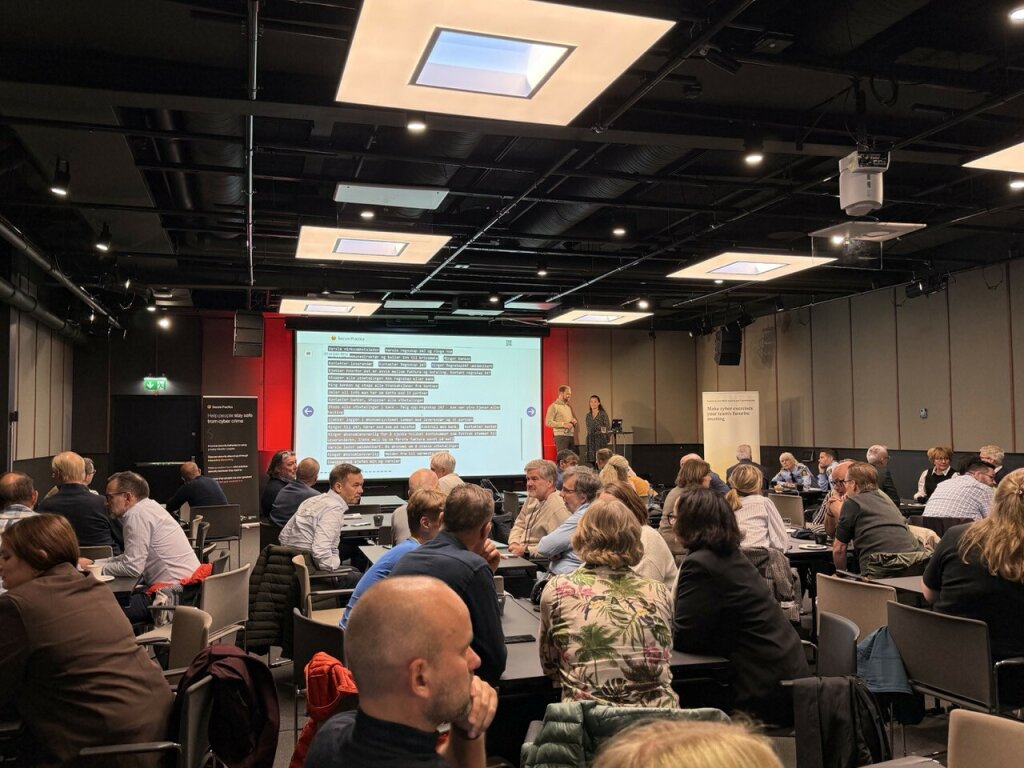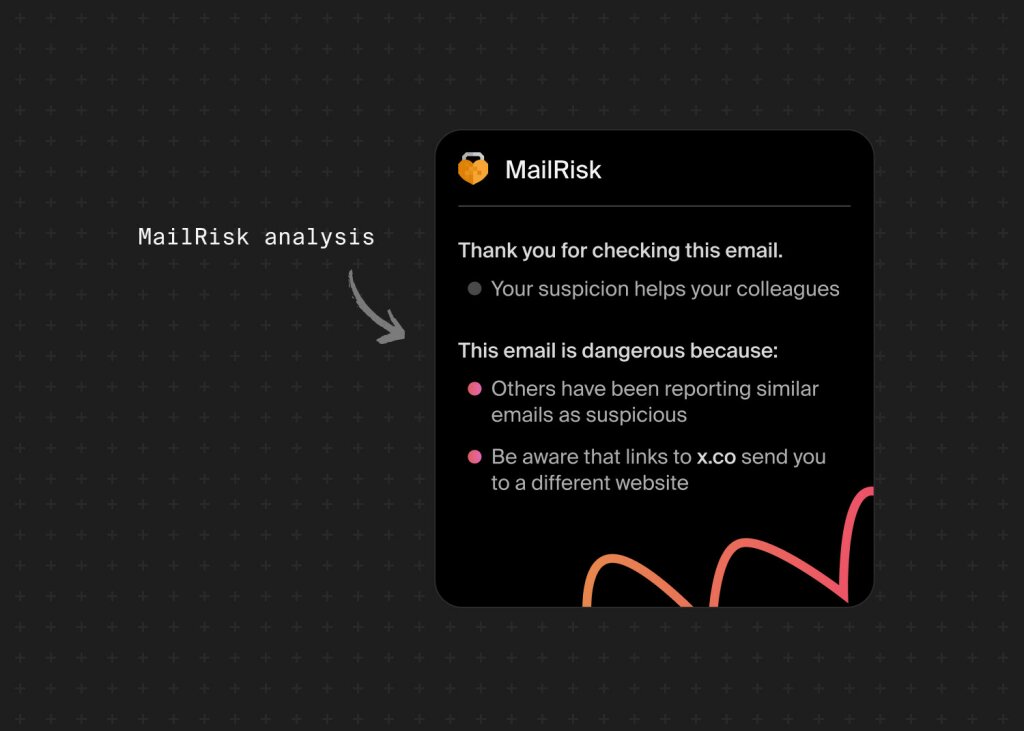Most companies treat cyber attack simulations the same way they treat fire drills: one big event a year, check it off the list, and move on.
But true preparedness doesn’t come from a single exercise. It’s built through a mix of training and practice. Awareness training helps people understand what to do; exercises help them experience how it feels to act under pressure.
Like training a muscle, resilience comes from small, repeated efforts that build confidence and memory over time.
In this article, we’ll explore why one-off simulations fall short and how to create a rhythm of learning and practice that’s both realistic and sustainable.
Why one-off exercises fall short
Annual cyber simulations are well-intentioned. They create urgency, bring people together, and reveal vulnerabilities, communication gaps, or unclear roles. As a first step, that’s useful—it helps security managers and teams see where plans break down and where follow-up training is needed.
But an annual simulation is still just that: an event. It measures awareness at a moment in time, not how people will behave when the real pressure hits months later. Once your annual exercise ends, without follow-up practice, the benefits fade quickly.
In other words, the issue isn’t doing one cyber exercise; it’s stopping there.
A single simulation can serve as a benchmark, but cyber resilience only grows when those lessons turn into continuous learning and follow-up exercises that strengthen what people have learned.
Why one annual exercise isn’t enough:
We don’t realize how quickly we forget: most people lose around 70% of what they learned within 24 hours. Without follow-up practice, the impact of a yearly simulation evaporates almost immediately, leaving only a vague memory that doesn’t translate into action.
Cyber threats evolve too quickly: threat actors are constantly adapting, using AI-driven social engineering, deepfake calls, and even malware to bypass controls. A yearly exercise can’t prepare your colleagues for attack scenarios that didn’t even exist when your last incident response plan was written.
Staff turnover erodes coverage: people leave, new hires join, and roles shift. Without ongoing incident response processes, people may never get exposure to your playbooks or crisis management approach. If cyber preparedness only happens annually, by the time the next exercise arrives, the group facing it could be completely different.
Culture isn’t built in a day: security culture is about people feeling ownership of their role in protecting the organization. That sense of responsibility comes from repeated signals and shared experiences. A one-off event, however intense, can’t replace the steady rhythm of smaller, ongoing exercises that normalize security conversations.
What works: recurrent cybersecurity exercises and training
If one-off simulations are snapshots, recurrent training and exercises are the movie. They build confidence and reflexes over time and help teams respond calmly under pressure.
The SANS 2025 Security Awareness Report shows that it takes three to five years for behavior change to take root across an organization, and up to a decade for a culture shift. That shift doesn’t happen through repetition for compliance, but through meaningful opportunities to learn, reflect, and apply lessons in realistic ways.
But let’s be clear: frequency alone doesn’t make learning effective.
Yes, security learning needs to be continuous, relevant, and embedded in daily work rather than an annual event. But training frequency is secondary to what people take away from it.
What really matters is whether they have the space to reflect, adapt, and apply what they’ve learned—whether the experience sticks enough to shape behavior the next time pressure hits.
That’s where the line between training and exercising becomes important.
Training develops and tests individuals: their personal skills, decisions, and responses
Exercises strengthen the organization: how people work together when systems fail or responsibilities overlap
In practice, both layers feed into each other. People need confidence in their own skills to contribute effectively in a crisis, and organizations need coordinated exercises to ensure those individual skills add up to a resilient system.
When training and exercises happen regularly, it strengthens incident response capabilities, making sure that when a real data breach or ransomware attack happens, your response team has already practiced in a safe environment.
Here’s what makes this approach effective:
Frequent, smaller simulations build “muscle memory”: shorter, repeatable exercises are easier to run and more effective than one overwhelming, large-scale scenario. They give people the chance to practice realistic decisions under pressure, strengthening the reflexes they’ll rely on in a real incident.
Role-specific training makes it real: Tailored cyber incident response exercises are a hands-on cybersecurity training method that helps your colleagues connect cybersecurity directly to their responsibilities. Finance teams might practice stopping a fraudulent payment, while a CISO or executive group rehearses decision-making in a simulated attack or ransomware scenario.
Continuous reinforcement keeps security top of mind: sprinkling smaller exercises throughout the year normalizes security conversations. Instead of treating cybersecurity as a one-off annual event, teams start to see it as part of everyday work, building awareness and confidence step by step.

At Secure Practice, we’ve seen how recurring cybersecurity exercises boost confidence, but also how planning them can overwhelm small teams.
PrepJam is our way of lowering that barrier. As a self-service tool for facilitating preparedness exercises, it turns simulations into something quick, interactive, and repeatable. With built-in scenarios, a branching storyline engine, and realistic interactive features like calls or texts, it helps people feel the pressure of a real incident without weeks of preparation on your side.
And because every company is different, we’re constantly evolving PrepJam with feedback from customers:
Making it role-relevant with content tailored for finance, managers, and IT teams
Scaling from 10 to 300+ participants, so both small teams and large organizations can train together
Adding reporting and insights so security managers can understand what happened in the exercise and how best to address it
The technology and its scenarios make it easy for us, facilitators, to keep participants motivated and to create a safe space for them to interact and start conversations around cybersecurity preparedness. PrepJam has been essential for running the awareness campaign Hele Norge Øver.
– Liv Dingsør, General Manager, Digital Norway
We know preparedness isn’t built in a day. That’s why PrepJam is designed to help you see opportunities to practice all year round—whether it’s a quick finance team scenario after spotting a phishing email trend, or a manager-focused session when deepfake calls make the news.
Our goal is to make learning about and practicing cybersecurity a rhythm rather than a rare event, meeting organizations where they are today and helping them build the strong security culture they want tomorrow.
Give your team a memorable cybersecurity exercise
With PrepJam, you can run quick, engaging, and realistic exercises that fit any team, any size, anytime.
How to build a realistic rhythm of training and exercises
Cybersecurity practice doesn’t have to be complicated. Think of it as a rhythm—a balanced mix of training and exercises spread throughout the year.
Start by identifying who you’re training and the challenges they face. Then plan realistic sessions: some teams, like incident response, might exercise quarterly; others only once or twice a year. Everyone still benefits from continuous training, but not everyone needs full-scale drills.
Here’s how that can look in a 12-month cycle that stays practical and people-centered.
Quarterly (core response teams)
Run incident response and crisis-management exercises once per quarter. Use tabletop exercises or interactive simulations that stress-test your crisis management and cyber incident response planning:
Actors: leadership, crisis response teams, IT/security staff
Objective: rehearse collaboration and stress-test decision-making and communication under pressure
Format: simulate a ransomware outbreak, supply chain attack, or data breach where execs must make fast calls and teams need to coordinate
Twice a year (team-based)
Plan scenario-based exercises for high-risk departments once or twice a year.
Actors:
Finance: practice spotting and stopping fraudulent invoices
Managers: rehearse handling a deepfake caller posing as the CEO
IT/tech staff: respond to spear-phishing leading to malware infectionObjective: practice handling incidents relevant to their roles and reinforce role-specific behaviors that directly tie to their responsibilities
Format: 30–45 min micro-simulations with realistic role dilemmas
Seasonal (context-driven)
Tie exercises to real-world risk peaks:
Actors: traveling staff, HR during hiring cycles, employees during tax or holiday season
Objective: build awareness of situational risks that spike at certain times of year
Format: short, scenario-based injects (fake travel scam email in summer, tax-season phishing in spring, holiday shopping malware in December)
Ongoing (awareness and learning activities)
Between these larger simulations, keep awareness alive through short learning touchpoints: phishing simulations, e-learning modules, or short scenario discussions tied to real-world events. These aren’t exercises in the strict sense, but they keep security knowledge active and prepare people for the next incident.
You can still time these to seasonal risk peaks, but treat them as light-weight awareness activities, not full crisis rehearsals.
Month-by-month rhythm of training and exercises
Not every organization will follow the same schedule, and that’s okay.
Here’s one example of how a balanced rhythm of training and exercises can look across a full year, mixing awareness touchpoints, team-based practice, and quarterly crisis simulations.
| Month | Type | Label | Example |
|---|---|---|---|
| Jan | 🟢 Awareness / training | Phishing trends | Kick off the year with a micro-learning or short quiz on current phishing techniques. |
| Feb | 🟠 Team-based exercise | Managers: deepfake caller drill | Practice verifying identity and escalation when receiving suspicious calls. |
| Mar | 🔵 Core response exercise | Phishing → malware | Quarterly crisis simulation testing incident detection and response. |
| Apr | 🟠 Team-based exercise | Finance: tax-season scam | Short scenario on invoice fraud or fake tax refund phishing. |
| May | 🟢 Awareness / training | Remote-work security | Quick reminders or discussions on Wi-Fi safety, VPN use, and secure file sharing. |
| Jun | 🟠 Team-based exercise | HR: data protection in hiring | Practice handling CVs and personal data safely during recruitment. |
| Jul | 🟢 Awareness / training | Summer travel scams | Lightweight awareness activity or phishing simulation linked to travel fraud. |
| Aug | 🟢 Awareness / training | Mid-year refresher: staying alert | A short interactive recap quiz or message to reinforce key behaviors before fall campaigns. |
| Sep | 🔵 Core response exercise | Ransomware response | Full-scale cross-department simulation testing decision-making and communication. |
| Oct | 🟢 Awareness / training | Everyday phishing | Run an internal challenge or campaign for Cybersecurity Awareness Month. |
| Nov | 🟠 Team-based exercise | Managers: project delay in crisis | Role-based scenario testing communication and prioritization under pressure. |
| Dec | 🔵 Core response exercise | Holiday breach scenario | End-of-year simulation focusing on communication under time pressure. |
Not every activity needs to be a full simulation. Design a schedule that fits how people actually work: core teams might practice quarterly, while others join once or twice a year. Everyone benefits from ongoing training, but only some need regular crisis rehearsals.
The goal isn’t to fill every month, but to create a rhythm that’s sustainable and relevant, keeping learning continuous and practice meaningful across the organization.
PrepJam supports this kind of flexible rhythm.
Customers told us they wanted to move from “one big annual event” to a series of touchpoints that stay fresh and engaging. That’s why we designed:
A library of ready-to-use scenarios to make it easy to get started with quarterly or monthly sessions—continuously expanded based on customer needs
A scenario editor so managers can easily adapt exercises to their own context
Built-in reporting after each exercise provides actionable insights, helping teams learn quickly and adjust their response
Preparing for NIS2 involves business continuity, executive stakeholder buy-in, preparedness plans—and very much exercising those plans.
– Erlend Andreas Gjære, Secure Practice, CEO and Co-founder
Why this matters for your organization
When training and exercises happen regularly, people stay sharp and security becomes something the organization lives—not something it checks off once a year.
The goal isn’t to make everyone a crisis responder, but to help people understand their role and give key teams space to practice it. Over time, this rhythm turns security from a compliance activity into a shared learning process, building both confidence and capability.
PrepJam helps make that rhythm sustainable, so preparedness becomes part of everyday work.
It lowers the barrier to practice and gives security managers the flexibility to plan exercises that make sense for their size, culture, and time constraints—whether that’s a full incident drill or a short role-based scenario that brings a team together for 30 minutes.
Start planning your training and exercise rhythm now
Don’t wait for the next big incident to test your team. Map out a 12-month rhythm of smaller, role-specific, and seasonal training and exercises.
FAQs
How often should we train and exercise?
A single large-scale exercise once a year might create a splash, but it won’t build lasting habits. The most effective rhythm blends ongoing awareness training (short, monthly, or quarterly micro-sessions) with targeted exercises for key groups.
The incident response team should practice quarterly, while other teams may only need a realistic scenario once or twice a year, supported by continuous learning in between.
This rhythm keeps skills fresh without overwhelming people.
How do we avoid ‘exercise fatigue’?
People tune out when exercises feel repetitive. The key is variety.
Rotate which teams are involved, mix formats (table-top discussions, phishing simulations, live elements), and tie scenarios to real-world events and the wider threat landscape. You can draw inspiration from NCSC threat intelligence updates to make your exercises as realistic as possible.
Short surprises also help—something as simple as a simulated text message or phone call mid-exercise can spark engagement and keep people on their toes.
How can small teams manage recurring simulations?
Every organization needs a methodology for preparing against cyber criminals; not just technical defenses, but people who can respond calmly when those defenses are tested. That’s what regular, realistic scenarios achieve: they turn incident response plans into actions and knowledge into skill.
Still, not every organization has a dedicated awareness team, and that’s okay. Keep exercises lightweight and simple to run. Use pre-built templates from tools like PrepJam, reuse scenarios with small tweaks, and scale sessions to fit your size—whether that’s a 20-person department or a company-wide meeting. The goal isn’t perfection; it’s building consistency without burning out your staff.
What’s the ROI of recurrent simulations?
Leadership wants to know: is the effort worth it? The answer is yes—if you track the right outcomes. Look at how response times improve, how reporting rates go up, or how decision-making under stress gets sharper over time.
These metrics help evaluate cybersecurity exercise effectiveness and prove that simulations aren’t just “practice.” They’re building measurable resilience and reducing risk in ways that technical tools alone can’t. Sharing progress in leadership updates also helps sustain long-term support.
Who is PrepJam designed for?
Cybersecurity specialists who need to prepare colleagues across the organization, even without deep technical design skills.
Can I customize the pre-built scenarios?
Yes—scenarios can be adapted with your own details, or you can build one from scratch.
Can it be used at events or conferences?
Yes—PrepJam scales to sessions with hundreds of participants, making it suitable for workshops or awareness campaigns.




